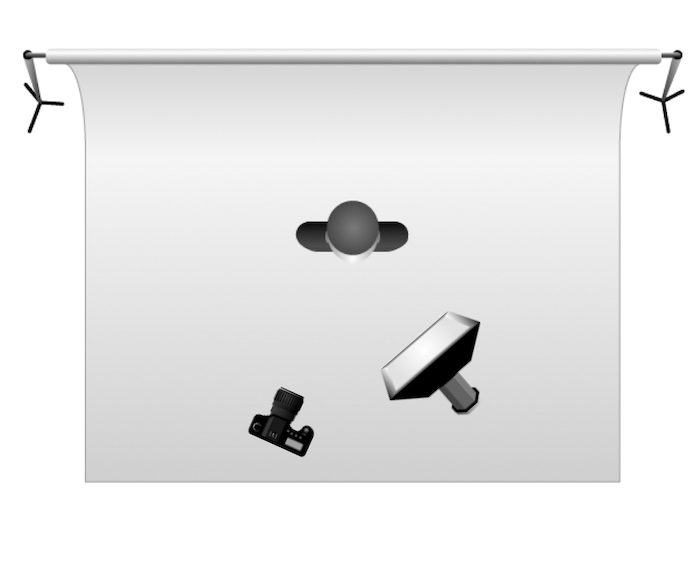Rembrandt Van Rijn was born on July 15, 1606 in Leiden, Netherlands. He came from a large family where he was the ninth child. His father was a miller and saw to it that Rembrandt had an excellent education. Rembrandt attended the University of Leiden, and soon got inclined to study art. Eventually he left school to become an apprentice to the artist Jacob Van Swanenburgh. He also was a student of the painter Pieter Lastman who specialized in historical and biblical subjects. 1Soon, Rembrandt become known for his skills as a painter. Rembrandt started his own art studio at the age of 19 and was teaching others how to paint at the age of 21. In 1631, Rembrandt moved to the city of Amsterdam where he started to paint portraits of people professionally.
In the 1600s, at a time when cameras had not yet been invented and people had portraits painted of themselves, Rembrandt gained the reputation as a great portrait artist. Many art critics today think that he was one of the greatest portrait artists of all time. He also painted numerous (over 40) self Portraits and portraits of his family. He was a genius in creation of true art by name of visual effect. Rembrandt had a way of capturing a person’s personality and emotion on the canvas. The people looked natural and real. In some of his paintings it feels as if the person in the painting is looking directly at you. In his later years he became more confident. Painting people to have them appear active. He also used light and shadow to create a mood.
Some interesting facts on Rembrandt
- He spent heavily on collecting art and art forms. Reason why, he never had a lot of money despite his paintings being fairly popular. He liked dogs and put them in several of his paintings
- He outlived his wife and his only son.
- His home in Amsterdam is now the Rembrandt House Museum. ∙ The Night Watch is currently displayed at the Rijksmuseum in Amsterdam.

Rembrandt created art of philosophy through his continuous practice in light patterns and used them in portraits. He added the silent’s’ to his signature for reasons unknown in 1633. He was one of the leading painters of the Dutch Golden Age, and is remembered for his dramatic use of light and shadow, his versatility, and most specifically, his portraiture.
Almost immediately after moving to Amsterdam in 1631, Rembrandt expanded his business; he became a burgess of Amsterdam and a member of the local guild of painters, acquired some students, and entered the lucrative market for portraiture – the genre for which he would become renowned. Although contemporary and classical Italian masters had great influence on Rembrandt through his training, the artist never actually left the Dutch Republic during his lifetime. Rembrandt was also recognized in his local area because of his social service to deliver free education towards young students.
Few Interesting folk stories on Rembrandt life, Such as: –
- He painted his dead pet monkey. According to writer Arnold Houbraken, Rembrandt was halfway through painting a portrait of a family when his pet monkey, Puck, died. For some reason, the artist decided to paint the dead animal into the portrait, alongside his depiction of the family.
- Rembrandt created more than 90 self-portraits, but he also liked to insert himself into his other paintings. He paints his face as a spectator in the crowd in several pieces of art, such as The Stoning of Saint Stephen (his first known painting), Raising of the Cross, and possibly even The Night Watch.
- In 2004, a neurobiologist at Harvard Medical School posited that Rembrandt was stereo blind: his eyes were unaligned, so he was unable to see in 3D. Published in The New England Journal of Medicine, the article argues that the artist’s oil paintings and etching self-portraits show that he had unilateral strabismus, meaning that his eyes were not properly aligned with each other.
- The Rembrandt House Museum built in 1606 houses collections of Rembrandt’s etchings, exhibits by artists whom he has inspired, and 17th century furniture. The museum also hosts etching workshops and paint preparation demonstrations.
- There is also one interesting fact about his love life. In 1634, Rembrandt married Saskia van Uylenburgh. Saskia gave birth to four of Rembrandt’s five children, although three of them died in infancy. Saskia died in 1642, probably of tuberculosis, prompting Rembrandt to produce some of his most successful works: dark portraits of his sick and dying wife. After Saskia’s death, he had a child, Cornelia, with his former maid Hendrickje Stoffel’s, who later became his common law wife. Cornelia was Rembrandt’s only living immediate family member at the time of his death.
- Rembrandt’s innovations extend past his handling of light and shadow. In arranging his group portraits, he broke the convention of stately and formal figural compositions, and shifted toward mid-action scenes of movement. His grouped figures appear preparing for missions, relaxing together in a jovial manner, or naturally arranged around a single focal point.
Lots of mystery involved surrounding Rembrandt, such as True Information about Rembrandt Lifestyle, because scholars don’t have a ton of primary or contemporaneous sources, myth plays a big role in many of his biographies. Inaccurate information is often repeated as fact, and books and films, such as the British movie Rembrandt (1936), have propagated misconception about the artist such as that he was low-born and uneducated (neither of which is true—he was the ninth child of a well-off miller and a baker’s daughter, and was educated straight through university).
Some of his best work, which made him The Rembrandt, is a new invention of art.

The painting Jacob Blessing the Sons of Joseph, (completed in 1656) depicts Joseph, the beloved son of Jacob bringing his sons Ephraim and Manasseh to his dying father to give them his blessing. This Rembrandt’s masterpiece is owned by and displayed in the Museumslandschaft Hessen Kassel in Germany

His next famous painting, The Storm on the Sea of Galilee, painted in 1633, depicts the miracle of Jesus calming the storm. The only Rembrandt’s painting in a seascape setting has unfortunately been lost for more two decades. In 1990, it was stolen from the Isabella Stewart Gardner Museum in Boston by two thieves disguised in police officers. In this masterpiece, Rembrandt depicts the Biblical miracle of Jesus calming the Sea of Galilee during a storm

The Self-Portrait with Two Circles : His painting speaks directly to viewers, as they (viewers) engaged themselves, because of his compositional judgment and lighting pattern makes him different from others. One of many Rembrandt’s self-portraits shows the artist at work, as he is depicted holding his palette, brushes and maulstick with two enigmatic circles in the background. There are several theories about the meaning of the two circles, ranging from the map of the word to various symbolic meanings. However, we will probably never know why Rembrandt painted the two circles and what he is trying to communicate. Painted between 1665 and 1659, the Self-Portrait with Two Circles is considered as one of the greatest masterpieces of Rembrandt’s later years and one of the best self-portraits he ever created. The painting is today on public display in the Kenwood House in London.

The Return of the Prodigal Son is among the last works of the celebrated Dutch painter and is believed to be completed shortly before his death. The life-sized painting depicts the Biblical story of the prodigal son at the moment he returns to his father, regretting his sins and begging for forgiveness. There is no agreement about who are the other figures in the painting, most notably who is the unforgiving older brother. According to some critics, it is the young man at the doorway in the back but according to others, it is the standing man on the right. The painting is one of the highlights of the Hermitage Museum’s Western European Art collection This Biblical painting masterpiece shows a father welcoming his son with open arms, after he has returned home in a wretched state, having wasted his entire inheritance in advance. The touching scene of forgiveness in the foreground is juxtaposed by the look of jealousy and resentment on his brother’s face in the background. Painted towards the end of Rembrandt’s career, this artwork displays his true mastery of expressive lighting and colorings.

Self-Portrait with Beret and Turned-Up Collar (1659)
Considered by many art critics to be the greatest self-portrait ever painted, this work is said to be inspired by Raphael’s portrait of Balthazar Castiglione. Rembrandt’s self-portraits are famous for being ruthlessly unmerciful, so this work can be taken to be a sincere depiction of the artist himself. In his face, one can see the stress brought about by a life of creative triumphs mixed with personal and financial strains.
The Rembrandt Art. A class act!
In terms of exploring and defining art of photography in various sections, historically and aesthetically, we always reconstruct other art of mediums, such as utilization and usage of lighting quantity and light direction in Rembrandt Art. Photography is based on lots of elements, in which photographer works on poses, background, garments, documentation, realism of subjectivity to lighting. Lighting is a key role and vital conscious element in photography, how will shadow behave and how will we connect image analysis with lighting.
The Rembrandt Light Effect
Rembrandt is One of Holland’s greatest and most versatile artists, trained under Pieter Lastman. Rembrandt lighting takes its name from the famous Dutch painter Rembrandt. He was a master of the chiaroscuro technique. And he often used this kind of light in his paintings, particularly in his self-portraits. Looking at his paintings, you’ll notice one light portrait lighting. How the short lighting hits the subject’s face is interesting.

For Rembrandt lighting, place your main source to the left or right side of the subject and aim it down at the face at about a 45-degree angle. Keep adjusting its position until you see the tell-tale triangle and the shadow to the side of and slightly below the nose.

Rembrandt lighting is identified by the triangle of light on the cheek. Unlike loop lighting where the shadow of the nose and cheek do not touch, in Rembrandt lighting they do meet which, creates that trapped little triangle of light in the middle. To create proper Rembrandt lighting make sure the eye on the shadow side of the face has light in it and has a catch light, otherwise the eye will be “dead”. In true Rembrandt lighting, the light triangle should be no wider than the eye and no longer than the nose. Triangle shaped catch lights in your subject’s eyes are another feature of Rembrandt lighting.
According to legend, Cecil B. Demille coined the term in 1915 on the set of “The Warrens of Virginia.” Rembrandt lighting creates drama and moodiness in a portrait. In Rembrandt lighting, light contrast created beautiful variation in visual manner; it is become more visual story telling way of presentation. The viewer’s attention is drawn to the triangle of light on the cheek. The contrast between light and dark is compelling and mysterious, and it makes for an interesting and engaging studio portrait.



